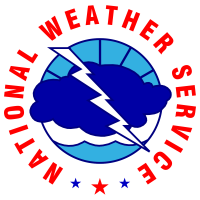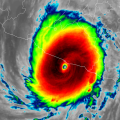
The National Weather Service (NWS) is a vital component of the United States’ efforts to provide weather, water, and climate data, forecasts, and warnings for the protection of life and property. Established in 1870, the NWS has been at the forefront of delivering timely and accurate weather information to the public. In this article, we will delve into the various services provided by the NWS and offer comprehensive tips on how to prepare for different types of storms.
Understanding the National Weather Service
The NWS operates under the National Oceanic and Atmospheric Administration (NOAA) and is responsible for monitoring and forecasting weather conditions across the country. It utilizes a network of radar stations, weather satellites, and surface observing systems to gather data. This information is then analyzed by meteorologists to produce forecasts and issue warnings for severe weather events.
Services Provided by the National Weather Service
- Weather Forecasts: The NWS provides daily weather forecasts, including temperature, precipitation, and wind conditions.
- Severe Weather Warnings: Alerts for severe weather events such as tornadoes, hurricanes, thunderstorms, and floods are issued to inform the public and allow for timely preparations.
- Climate Data: The NWS collects and provides historical climate data, which is essential for research and understanding long-term weather patterns.
- Marine and Aviation Forecasts: Specialized forecasts are provided for maritime and aviation interests to ensure safety in these sectors.
- Hydrological Services: The NWS monitors and forecasts river and lake levels, providing crucial information for flood warnings and water management.
Preparing for Storms: A Comprehensive Guide
Tornadoes
- Bio: Tornadoes are violent rotating columns of air extending from a thunderstorm to the ground. They can cause devastating damage in a short amount of time.
- Preparation:
- Designate a safe room or storm shelter in your home.
- Keep a battery-powered weather radio to stay informed about tornado watches and warnings.
- Secure loose outdoor items that could become projectiles.
Hurricanes
- Bio: Hurricanes are large tropical cyclones with sustained winds of at least 74 mph. They can cause widespread damage through high winds, heavy rainfall, and storm surges.
- Preparation:
- Develop an evacuation plan and know your local evacuation routes.
- Stock up on emergency supplies, including water, non-perishable food, and medications.
- Protect windows with storm shutters or plywood.
Thunderstorms
- Bio: Thunderstorms are characterized by lightning, thunder, and often heavy rain or hail. They can lead to flash flooding and power outages.
- Preparation:
- Unplug electrical appliances and avoid using landline phones during a storm.
- Stay indoors and away from windows.
- If outdoors, avoid open fields and tall objects like trees.
Winter Storms
- Bio: Winter storms can bring freezing temperatures, snow, ice, and strong winds. They can cause hazardous travel conditions and power outages.
- Preparation:
- Insulate your home and ensure your heating system is functioning properly.
- Keep a supply of warm clothing, blankets, and a portable heater.
- Maintain a stockpile of food and water in case of power outages.
Floods
- Bio: Floods are an overflow of water onto normally dry land, often caused by heavy rain, melting snow, or storm surges. They can result in significant property damage and loss of life.
- Preparation:
- Elevate electrical appliances and utilities above potential flood levels.
- Install check valves in plumbing to prevent floodwater from backing up into your home.
- Have a portable sump pump and hoses ready to remove floodwater.
Conclusion
The National Weather Service plays a crucial role in keeping the public informed and prepared for various weather-related hazards. By understanding the services provided by the NWS and following the preparedness tips for different types of storms, you can significantly reduce the risk of injury and property damage. Stay informed, stay prepared, and stay safe.







